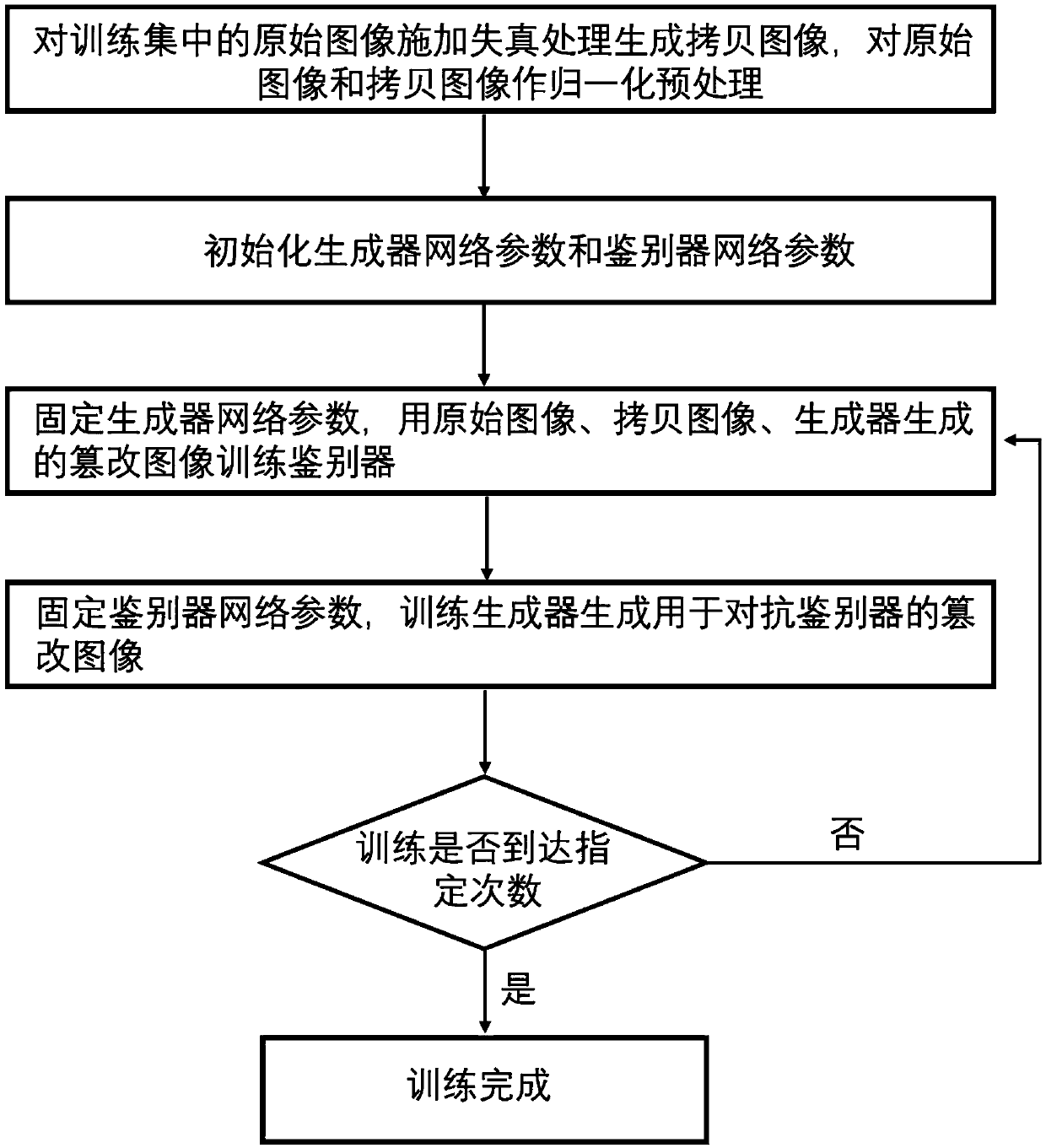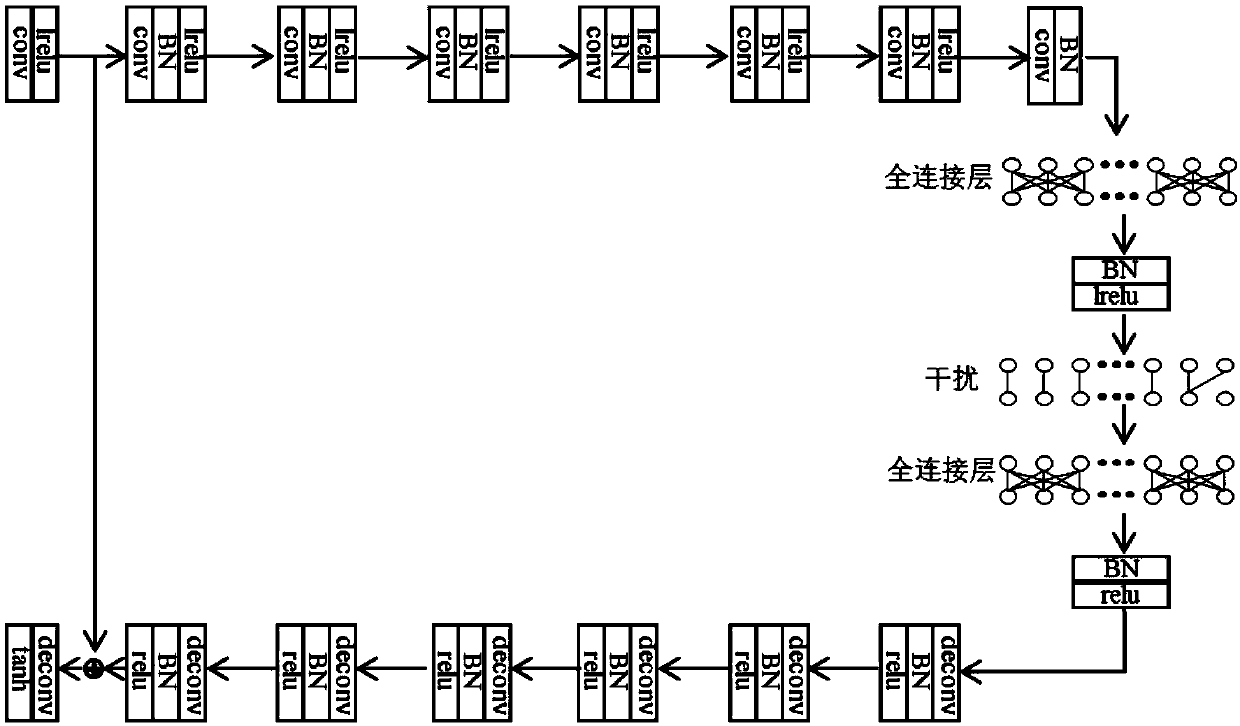An image copy detection method based on generative adversarial networks
A detection method and image technology, applied in biological neural network models, instruments, character and pattern recognition, etc., can solve problems such as difficult to describe robust features, complex redundancy, complex image information expression, etc., to avoid complicated processes and limitations performance, program simplicity, and good robustness
- Summary
- Abstract
- Description
- Claims
- Application Information
AI Technical Summary
Problems solved by technology
Method used
Image
Examples
Embodiment 1
[0041] In order to improve the recognition accuracy of the image copy detection algorithm, an embodiment of the present invention proposes an image copy detection method based on a generative confrontation network, which is composed of a generator and a discriminator. The role of the generator is to generate tampered images based on the original image to fool the discriminator for copy detection, while the role of the discriminator is to distinguish the copied image pair from the non-copy image pair, see figure 1 , the specific operation is as follows:
[0042] 101: Apply distortion processing to the original image in the training set to generate a copy image, perform normalized preprocessing on the original image and the copy image, and form the original image and the corresponding copy image into a positive sample, and form different original images into a negative sample;
[0043] Among them, the normalized preprocessing of the original image and the copied image is specifi...
Embodiment 2
[0075] The method in Embodiment 1 is described in detail below in conjunction with specific parameters and calculation formulas, see the following description for details:
[0076] 201: image preprocessing;
[0077] Among them, 10 are randomly selected from the ImageNet dataset 4 image, and fix the image to the standard size of 256×256.
[0078] 202: Generate a copy image;
[0079] Apply a random distortion to the normalized image, generating 10 4 copy image. Types of random distortion include: JPEG lossy compression, Gaussian noise, rotation, median filtering, histogram equalization, gamma correction, adding speckle noise, and loop filtering. Normalize the original image and copy image pixels to zero mean, standard deviation, and then linearly transform the pixel value range to [-1,1].
[0080] 203: Construct a discriminator;
[0081] The discriminator network used in the embodiment of the present invention is an improved Alexnet network, including: five convolutional l...
Embodiment 3
[0111] The scheme in embodiment 1 and 2 is carried out feasibility verification by experimental data below, see the following description for details:
[0112] Sampling 3×10 in the ImageNet database 3 The test images do not overlap with the original images in the training set. Do the following processing on the test image:
[0113] 1) Normalize the test image to a standard size of 256×256;
[0114] 2) Apply median filtering and Gaussian noise distortions to the normalized test image, and select different degrees for each distortion, as shown in Table 1.
[0115] Table 1 Distortion types and parameter settings
[0116]
[0117] Each original image is distorted to produce 19 copy versions, forming a 5.7×10 3 copy images. Combining two pairs of original images For non-copy image pairs. Using the discriminator trained in Embodiment 2, obtain the hash distance between the copy image pair and the non-copy image pair, and perform histogram statistics. If the hash distance...
PUM
 Login to View More
Login to View More Abstract
Description
Claims
Application Information
 Login to View More
Login to View More - R&D
- Intellectual Property
- Life Sciences
- Materials
- Tech Scout
- Unparalleled Data Quality
- Higher Quality Content
- 60% Fewer Hallucinations
Browse by: Latest US Patents, China's latest patents, Technical Efficacy Thesaurus, Application Domain, Technology Topic, Popular Technical Reports.
© 2025 PatSnap. All rights reserved.Legal|Privacy policy|Modern Slavery Act Transparency Statement|Sitemap|About US| Contact US: help@patsnap.com



